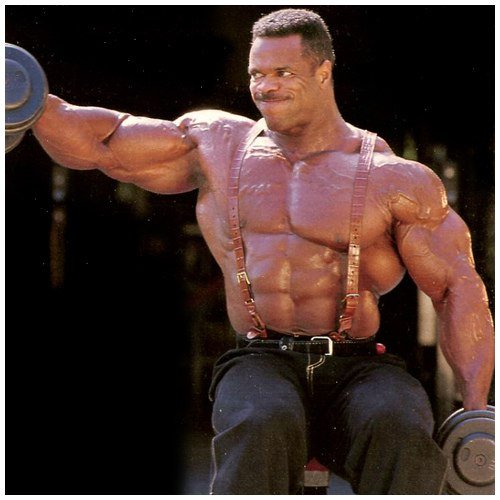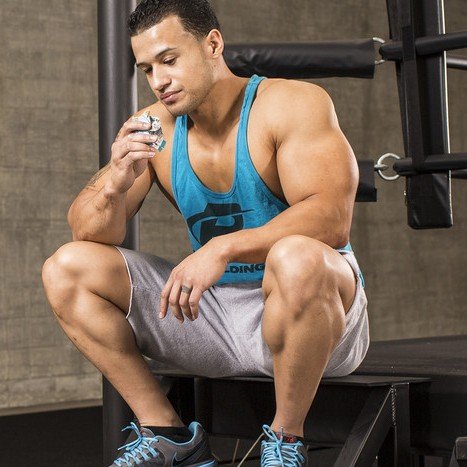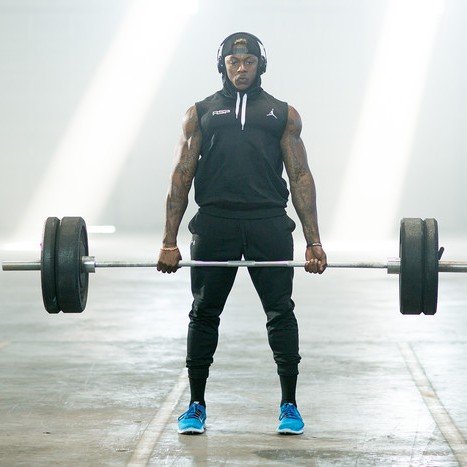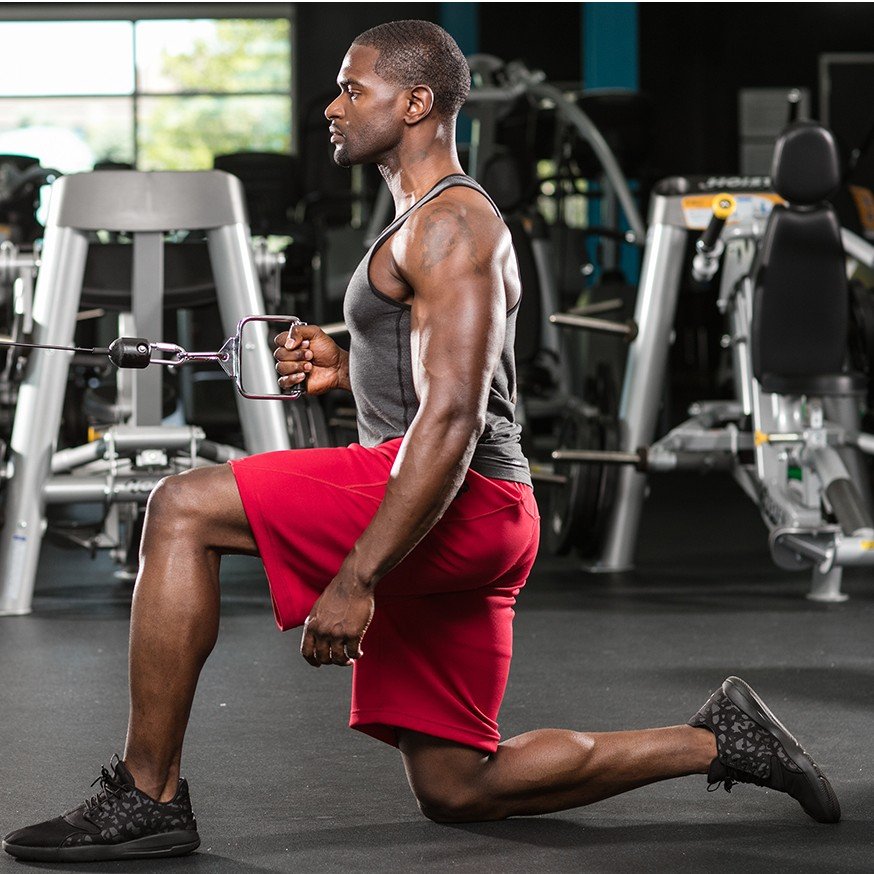Shoulders are quite a fragile thing. One wrong motion can provide an injury. Unfortunately, wrong technique in the shoulder day is usual practice, alas. That’s why we decide to collect 9 the most common mistakes of shoulders’ day and ways to correct them.
Let’s go.
The first mistake: not all overhead presses are equal.
For most visitors of the gym overhead press is the main basic shoulder exercise, but it doesn’t mean that all its variants train deltoid on equal level. It is a big mistake to make such a stupid statement. They all are different And You Should understand these differences to choose the best for yourself.
For example, lowering a barbell in front or behind your head shifts the focus on a definite part of delts due to change in the elbows position relative to the torso.
Doing simple overhead dumbbell press, pay attention on the upper arms. They should be strictly straight out to your sides. It means that middle delts take position that needed their minimum contraction.
During Arnold press or barbell press tool is in front of you and elbows pull forward. Such a little shift recruits front delts in training relieving the load of middle delts. So doesn’t derogate such a variant of shoulder muscles development, this is not the best choice for middle delts.
As concerns dumbbell and barbell presses behind the head, just they develop middle delts. Additionally, if constantly pay attention on upper arms position, you may clearly understand the value of this exercise for pumping front delts.
If you have the aim to develop front delts, you should give preference to presses in which tool are lowering to the chest. Also think about including Arnold press in your routine.
The second mistake: arching the back during overhead presses
Everything can go wrong if you hang on a bar to many plates and begin to press this barbell over your head. In such cases if tool is to heavy, you can see the next picture: sportsman trying to press barbell arching his back. It can be explained by human body trying to find the way of creating an effective leverage.
In best case such a situation turn overhead press to incline bench press when the main loaded muscles are not shoulders but the chest. This hybrid of exercises is loading the lower back And You Should much.
When we talk about shift of load from such an arching, we think not only about delts are not getting their portion of work. Security of overhead press provides by neutral vertebral column position (only small essential curve is allowed). Abs and lumbar muscles should be in tonus at this moment. When spine curve is more than essential, there is another picture. Hyperextension of spine in the thoracic and lumbar region in combination with big weight can lead to disc herniation.
Thus, doing seated overhead barbell press you should always have bench with back support. It should be in the straight position. If you prefer standing overhead press, don’t forget that back arching should be very small. Don’t transform overhead press in an incline press in no case.
The third mistake: super weights in behind-the-neck presses
Some sportsmen practice routine principal “3*10” all their sports life, but the most try to alternate light and hard trainings.
Low-rep training with big weights truly helps to develop power delts, but there is a trap: couple of additional plates on the bar can play ugly joke during press behind-the-neck.
When doing press behind neck, shoulder muscles are in their weakest anatomical position at the bottom of the move. So Too heavy weights increase the risk of muscles and ligaments rupture.
So if you want it very much, use heavy weights to train barbell press in front of the head, but use only moderate ones when you train behind-the-neck press. This is the optimum variant to develop middle delts.
The forth mistake: close grip on upright rows.
To work your middle delts maximally, you should raise your hands exceptionally directly out to your sides. It happens when you do upright rows with moderate grip, but not narrow like hipster’s trousers.
If you want to use close grip, watch elbows position obligatory. They move forward and out to your sides, your torso sides. Using a close grip causes internal shoulder rotation, which isn't always healthy for your joints. This not only put fewer load on the middle delts, but also increases the likelihood of shoulder injuries in long-term period.
So we recommend you use moderate grip for barbell. It gives the opportunity to move elbows on proper range. Furthermore such a technique is suitable for developing middle delts.
The fifth mistake: cutting range of motion.
Many of our gym’s colleagues do single-joint exercises in very specific manner. For example, training lateral raises and front raises they finish the motion barely achieved shoulder level. At this point the front and middle delts are not in maximum contraction yet. So, you can raise your arms higher and muscles will continue to contract. It’s interesting that some experts advise to work in the range up to 45° above horizontal axis.
Increasing range of motion in these exercises makes them more difficult. So, probably, in this case you will need to sacrifice weights. Nevertheless, additional amplitude and time increase, when muscle is under load, are good benefits for including isolation exercises in your training and don’t finish the motion on the shoulders level height.
The sixth mistake: opening and closing elbows in isolation exercises
It would be a little evil if this mistake is occurred only among beginners. Alas, even experienced builders make it too. To be honest, I’m tired of it, but repeating once more: your arms should be locked in a slightly bent position when doing isolation exercises. It doesn’t matter what tool is used.
When you start closing and opening up at the elbows triceps begin to work. This decreases effectiveness of muscles isolation. Let’s take concrete example: reverse standing cable flies.
How does this exercise usually train? Elbows are extended to 180° at the top point and then are closed to 90° in lowering weight phase. It’s wrong and the main reason of mistake is too big weight.
If during exercise for shoulders you are extending your elbows, we congratulate you with doing excellent exercise for triceps. But unfortunately today is a shoulders day…
Even though you should focus on elbow’s exentionn, you shouldn’t block the joint totally because this is a stress for it. Lock a very slight bent in your elbows and keep them in that position during all exercise.
The seventh mistake: training rear delts in the end of the routine.
Our deltoids consist of three parts: front, middle and rear. Many sportsmen train them exactly in this range just because they are seen in the mirror in such order. This is wrong approach.
Such builders who prefer to train power chest, usually have developed front delts because they take part in all press exercises for the chest muscles.
If you back trainings are not so effective or, even worse, you ignore them, then rear delts are not so developed in compare with the front and the middle heads. With time it can lead to problems with rotator cuff of shoulder. Furthermore, due to this shoulders are visually pull forward and it seems that you are slouched.
If you like many sportsmen have non-developed rear delts, train isolation exercises more for these muscles in first or second training part right after presses till you feel yourself strong enough, or you should think about including in your training one more isolation exercise on weak part.
If you can boast proportional development of all three deltoid heads, you can change range and order of trainings to provide equal load among them. But if some part has a load at the last moment, sooner or later it will lag from other delts.
The eighth mistake: avoiding rotator-cuff training.
Strength trainings are exhausting themselves. What we can say about muscles which we cannot see and devote a couple of minutes to stretching that does not lead to mass gain. That’s why rotator-cuff training is in the end of everyone’s training list (if is included in it at all). It’s a pity: rotators is a muscle group of 4 straps working together with delts, they stabilize the shoulder joint.
So, when you load the delts (and chest, for that matter) but forget about rotators, an imbalance occurs between these two muscles groups. This increases the risk of rotator cuff injury. Every experienced sportsman can tell you about importance of shoulder rotator cuff health. We understand that it is not so interesting to train them in compare with chest, but nevertheless, training with eternal and external rotation exercises helps you to avoid shoulder’s injuries in the long-term period.
The ninth mistake: shoulder training the day after chest.
Shoulders and especially front delts often take part in chest exercises and triceps helps to do overhead presses. It’s logical to make conclusion that split scheme is very significant.
So if you train chest and/or triceps during the same training with delts, it’s ok. If not, it will be reasonable have 2 days rest before and after chest training not to overload the delts. I.e. have a chest day on Monday, shoulders day on Tuesday and triceps day on Wednesday is not a good variant.
If you like the article, press “like” and share it with friends. There is one plus in karma from us





